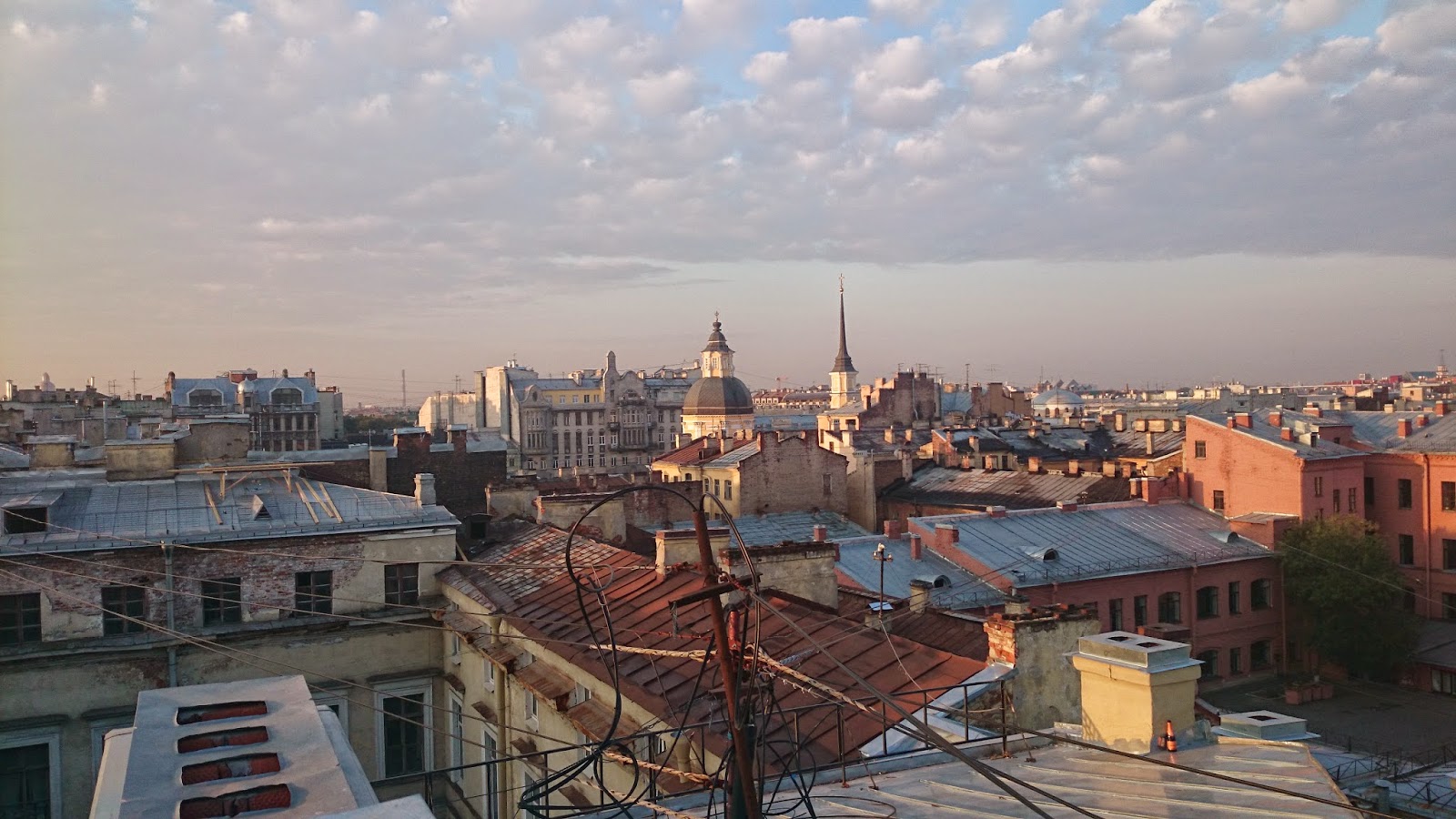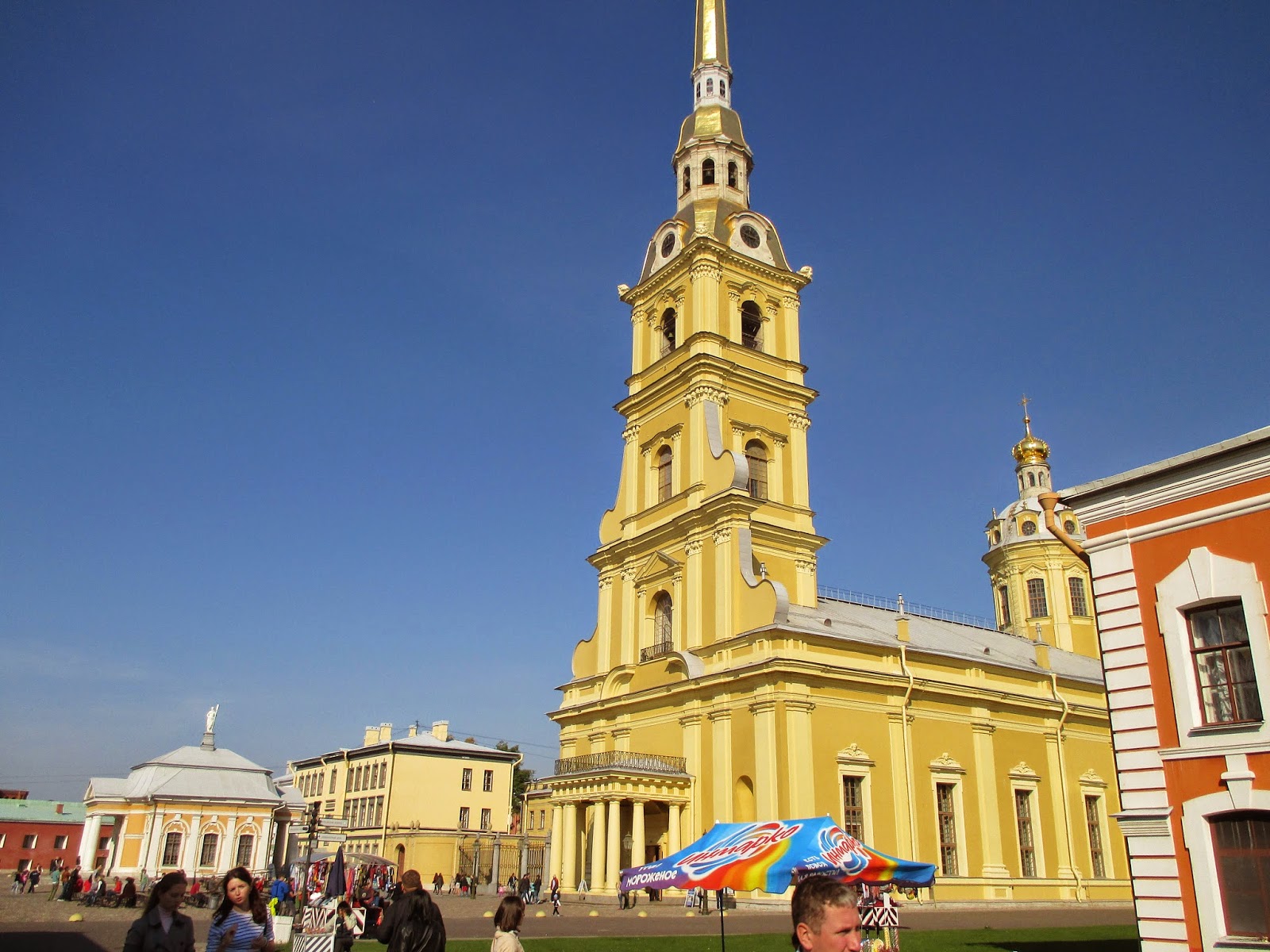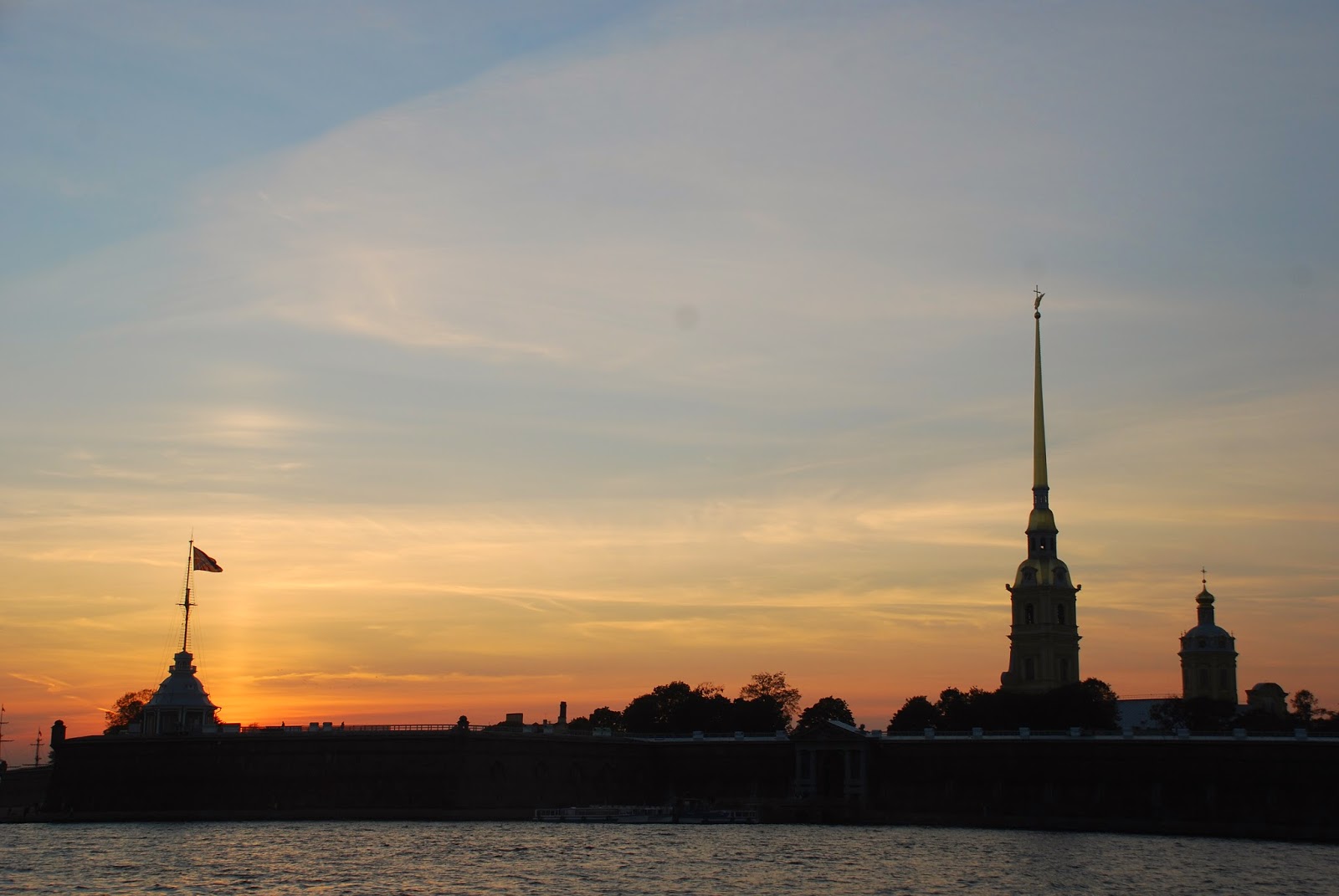Back in Helsinki. We go on a bus at the airport and I see my
blue checkered suitcase again. Seems like Pilleriin didn’t take it back to
Estonia with her. Silvia claims that the owner of the suitcase greeted me, but
I don’t think that to be likely. To be sure, I take a closer look a the man
sitting infront of me. It’s hard to recognize anyone by seeing only the back of
the person, but as it turns out while leaving the bus, it was my colleague
Andrei Ushanov, who owns a clinic close to mine. Andrei and his wife are coming
back from their vacation in Spain.
Dr. Ushanov and dr. Toomet in Helsinki railway station.
Helsinki - a shop for homeless animals
We take a train to Kouvola. Dr Helene Juola (Jami) is
already waiting for us with lobsters and a sauna. Sadly, they joys of a sauna
and some good company cannot last long, as we have to be on the train to St.
Petersburg early the next morning.
The
small animal veterinary clinic of Kouvala’s ELL Helene Juola, where my path as
a small animal veterinarian began.
My Finnish home
Our dinner in dr. Helene Juola`s home in Finland
Hupi -dr. Helene Juola’s dog
I am taking part of the St Petersburg fall veterinary
conference for the fifth time. Many of my colleagues from Estonia have come
with me to give lectures – Dr Sveta Belova (dermatology), Dr Ülle Kell
(ophtalmology), Dr Ingrid Hang (gastroenterology), Dr Katrin Mägi (urology); Dr
Jan Räihä (orthopedics), Dr Merja Ranta (lab specialist) from Finland; Dr Peter Bedford (ophtalmology) from the UK; Dr Kersti Seksel and Dr Gaille Perry
(behaviourists) from Australia.
Today I am giving a lecture about itching dogs. Luckily
that’s in the afternoon so I have time to prepare and have lunch with my
colleague Markel Mängel from Norbrook.
Markel Mängel (Norbrook), Estonian chocolate and me
1. I have finished my lecture. Next up is dr.
Andrei Komolov (a cardiologist at „Belõi Klõk“ clinic)
A banquet is held in the evening. And because it’s the tenth
anniversary of the conference, everything is especially festive. The organizers
of the whole thing – Svetlana Valeejeva and Svetlana Jakovleva – are truly the
stars of the evening. For entertainment, we are presented with two dancing dogs
and a russian ’’superstar’’ we know nothing about.
Svetlana Valeejeva - the soul of Baltic Forum
The following day is a day of excursions – the Hermitage and
a boatride on the canals. Silvia explains this better, as although I made notes
no-one could understand them, including myself.
Silvia on her blog: We
had a very interesting private tour of the Hermitage with an assigned guide.
I’m trying to dechiper the notes mother has written, but with no luck. So these
are some things I wrote down during the tour:
·
In 1837
the Hermitage was burnt down by a great fire. All of the expensive and
beautiful works of art were thrown out of the windows to save them.
Miraculously, nothing was stolen.
·
By the end
of the 19th century, the Hermitage had electricity. The museum has 700 000
lightbulbs nowadays.
·
Peter the
Great stood a staggering 2m 4cm in height but wore a shoe sized 36/37. That’s
why he had a walking stick, which became a real fashion statement in Russia at
that time.
·
Catherine
the Great was actually a German princess and reigned in Russia the longest –
for 21 years.
·
We visited
the Hermitage conveniently when an exposition of royal garments was on show. We
got to see a dress, which was displayed for the first and last time.
·
Elizabeth
the First (who had the palace built) had a collection 16 000 dresses, of
which she wore each only once.
·
The
Hermitage exhibits 24 Rembrandts, 2 da Vincis, 1 de Goya and many other
paintings by famous artists.
The museum itself is
tremendous. We walked around for two hours and never saw anything twice. Still
alot remains unseen, so we’ll have to visit again.
Hermitage
I do remember some facts (from the readable ones):
Cats have always been very important at the Hermitage (see
picture below).
As Silvia already mentioned, they protect the exhibits from
rodents. The tradition of Cats at Court dates back to a 1745 decree of Empress
Elizabeth, the daughter of Peter the Great, founder of St. Petersburg. In a bid
to rid her palace of rats, she issued the order "to find in Kazan...the
best and biggest cats capable of catching mice, and send them to... the Court
of her Imperial Majesty, along with someone to look after and feed them, and
send them by cart and with sufficient food immediately". The cats had to
be male, and "treated" Today, 74 cats, of both (neutered) sexes, roam
the underbelly of the museum, and three volunteers, under the jurisdiction of
security chief Tatiana Danilova, spend six hours a day underground, tending to
their needs. There are kitchens for preparing their food ("they all have
different preferences"), and even a small hospital.
At the end of the 30s Stalin sold 24 of the very famous and
expensive paintings. The Hermitage has only gotten one back – a millionaire who
bought a Goya generously gave it back to
the museum.
The thone where once the USSR map used to hang. A giant ruby stood in the middle, representing Moscow.
A wondrous clock
A picture brought from Cologne, Germany with an interesting name –
„Ema“, which means mother in Estonian.
 Find
the cat. More famous pictures on Silvia’s blog
http://silviajatiinaeuroopas.blogspot.com.tr/2014/09/19-ja-20-paev-tere-venemaa.html
Find
the cat. More famous pictures on Silvia’s blog
http://silviajatiinaeuroopas.blogspot.com.tr/2014/09/19-ja-20-paev-tere-venemaa.html
Cahterine the Great bought this statue without knowing it was a piece by
Michelangelo.
A huge vase
Some attractions outside the Hermitage - my first car
Then we went to see
the fortress of Peter-Paul. By that time, I was exhausted and demanded mother
to change her 5000 rubles to smaller currency and buy me something to drink.
The booth-ladies didn’t want anything to do with a banknote that big, we might
as well could’ve given them Monopoly money. I was still dying of thirst (not
exaggerating). Next on schedule was a visit to the Trubetsky Garrison, which was
once a prison for political prisoners. It was a fairly normal prison – big
rooms with a window, bed, toilet and a sink. In the Russian Empire the
prisoners lived alone. They could ’’order’’ books, tea and bread to their
cells, all for their own money of course. We also found out Trotsky and Gorky
had shared a cell, although not
simultaneously, each at their own time.
After visiting the
prison, we went to eat some dumplings, but they were fancier than anticipated.
We wanted something greasy and disgusting, but had to settle.
Then back to the hotel
and on to a bus to go on a boat. A boatride on the canals was promised, but in
reality we started from a tiny canal, circled Neva and went back to the canal.
The sights were beautiful though. The setting sun colored the sky in beautiful
magical hues. We were also served some food (which was a surprise) and vodka
(which I wasn’t really craving).
The Peter-Paul fortress is built
on Rabbit Island
the church at Peter-Paul fortress
The wall of Peter-Paul fortress with sunbathers surrounding it. NB!
20.09
We were only allowed to take pictures od the outside. The historical house of
Peter the Great was inside this house.
Lunch with colleagues Alain Fntbonne ja dr. Elena Kadochnikova
I will use my colleague Natalja Ignatenko’s pictures to illustrate our
boat trip. They are simply stunning.
And some photos from Silvia
Dr. Florence Cliquet ( who participated in the international rabies meeting in St. Petersburg) send greetings from France to Estonian colleague
Enel Niin, who is dealing with this problem in Estonia. Actaully she has solved this problem already. We don´t have rabies in Estonia any more.
An Ukrainian colleague of mine, Natalja Ignatenko informs me
that Aurora is leaving the next day and that she has booked an excursion on the
rooftops of St Peterburg before that.
The ad for it was spray-painted on the
ground by someone named Jevgeni, cost 1000 rubles and begun at 8 o’clock under
the red cube. Of course I decided Silvia and I should join.
Silvia on her blog: A
colleague of mother, Natalja from Kiev had told her she would take part of this
adventure called ’’The rooftops of St Petersburg’’. Coincidentally, we had seen
the same ad in the city and wondered about it. Just our luck – Natalja had
already called the number on the ad and everything was in order, so we went
along with her.
At 8 o’clock in the
morning (waking up at 6.30, everyone) we met Jevgeni in front of the cafe ’’Red
Cube’’. He seemed younger than I and a bit mischevious. He guided us into a
courtyard and staircase somewhere. I was feeling anxious, although the boy was
small and wouldn’t have stood a chance against three tough women. He led us all
the way up to the fifth floor, to the attic which was a real nightmare. There
was no light, it was dusty, cramped and tiny, probably had rats. But we climbed
up from the attic window onto the roof.
It was far from an
excursion. I’d say it was dangerous hiking. Although the boy showed us some
nice buildings and seemed to have known interesting things about them, I
couldn’t understand anything. There were no safety lines or borders to keep us
from falling. The only things to hold onto were electric wires and the only
things to hide behind were chimneys. We were most likely involved with
something a bit illegal because at one point Jevgeni warned us to walk very
very quietly. He didn’t say why, but I imagine I wouldn’t appreciate people
trampling over my roof every morning. Once again – the sights were beautiful,
but it was nice to get down from the roofs afterwards.
 Jevgeni says that some wires have electrical
currents running through them. He’ll show us which ones. The other ones we can
hold onto.
Jevgeni says that some wires have electrical
currents running through them. He’ll show us which ones. The other ones we can
hold onto.
Meeting under the red cube
We enter the house in whispers and on tiptoes
From the attic to the roof
The view is gorgeous, but it doesn’t feel very safe
Is there nothing else to hold unto except this
chimney?
Our guide Jevgeni (on the right)
 Jevgeni says that some wires have electrical
currents running through them. He’ll show us which ones. The other ones we can
hold onto.
Jevgeni says that some wires have electrical
currents running through them. He’ll show us which ones. The other ones we can
hold onto.
Mostly there’s nothing to hold onto.
So we have to bravely try other
ways
or third ways.
Last two - We may seems happy and brave, but actually...
... it seems as though it’s getting
more difficult (last three)
I took a big chunk out of this chimney. It made
quite alot of noise falling on the tin roof.
We had to cross some places on tiptoes.
How much more and how much further?
Our guide – an eagle
The eagle takes Silvia under its wings
we quickly glance down from here
and our savious, the door to the attic, is at
sight
This is
the house, where we stomped on. It doesn’t seem so high from down here.
By Natalja Ignatenko
By Natalja Ignatenko
Last 7. Some pictures from the roofs as well. Why else did we climb up there?
Last 7. Some pictures from the roofs as well. Why else did we climb up there?











































































No comments:
Post a Comment